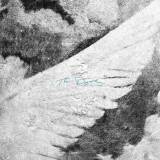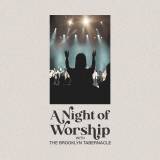Know Your Vocal Range

Finding your vocal range
and correct key is an important part of
becoming a singer. One of the biggest complaints from our instrument players is
that popular singers rarely know in which key their music is to be performed!
Ideally it helps if you
have some knowledge of music theory or play a musical instrument. The key
of a song is often (but not always) reflected in the first note or chord of the
song. In sheet music this is denoted by the symbols written at the
beginning of the song. The Clef sign may or may not be accompanied by one or
several sharps or flats - this informs the musician which key the music should
start in and may change in parts or throughout the song from one key to
another.
Learning to Sight
Read/Sing not only gives the singer more performance opportunities but also
helps to gain confidence in their abilities and ensures that the vocalist can
discuss any problems/ideas with fellow musicians in a common language.
To find your vocal range
you will need the aid of a musical instrument (and preferably a singing
teacher!). Start by playing and singing a middle C (a keyboard is best for this
- middle C is usually the 3rd or 4th octave C on the keyboard, depending on the
range and size of the keyboard or piano you are using. On a full size piano
Middle C is the 5th C from the bottom which is sometimes written as C4 whilst
smaller keyboards usually omit the lower octaves completely). Play and sing
each note down the scale - each note that is comfortable to sing is considered
as part of your range - once you have reached a note that sounds and feels too
low for your voice stop and write down the name of the last note you were
comfortable with and its position on the keyboard. Repeat the exercise moving
up the keyboard.
Take a look at the notes
you have written down and count the octaves from the bottom note to your top
note on the keyboard (without including the sharps and flats [black notes], an
octave is 7 notes so A to G is one octave). The amount of octaves, plus any
extra notes equals your vocal range. A classification of a singers range
usually refers to the strongest notes which vary from lower, middle or upper
part of the voice in each individual. This is only a general guide as the voice
changes with age and training, an experienced arranger, accompanist singer or
teacher should be consulted for a true evaluation.
A singers range may be
extended in time with lessons but the term 'extending the range' is not really
appropriate. Your actual range is fixed at birth. You cannot sing or stretch
your voice beyond its natural capabilities without causing damage to the vocal
chords (also known as vocal folds). When a singer or teacher talks of extending
their range, they are referring to improving the top or bottom notes to the
point where they are as comfortable to sing as the notes in between.
Know Your Vocal Range
 Reviewed by Admin
on
1:06:00 PM
Rating:
Reviewed by Admin
on
1:06:00 PM
Rating:
 Reviewed by Admin
on
1:06:00 PM
Rating:
Reviewed by Admin
on
1:06:00 PM
Rating:
















Post a Comment